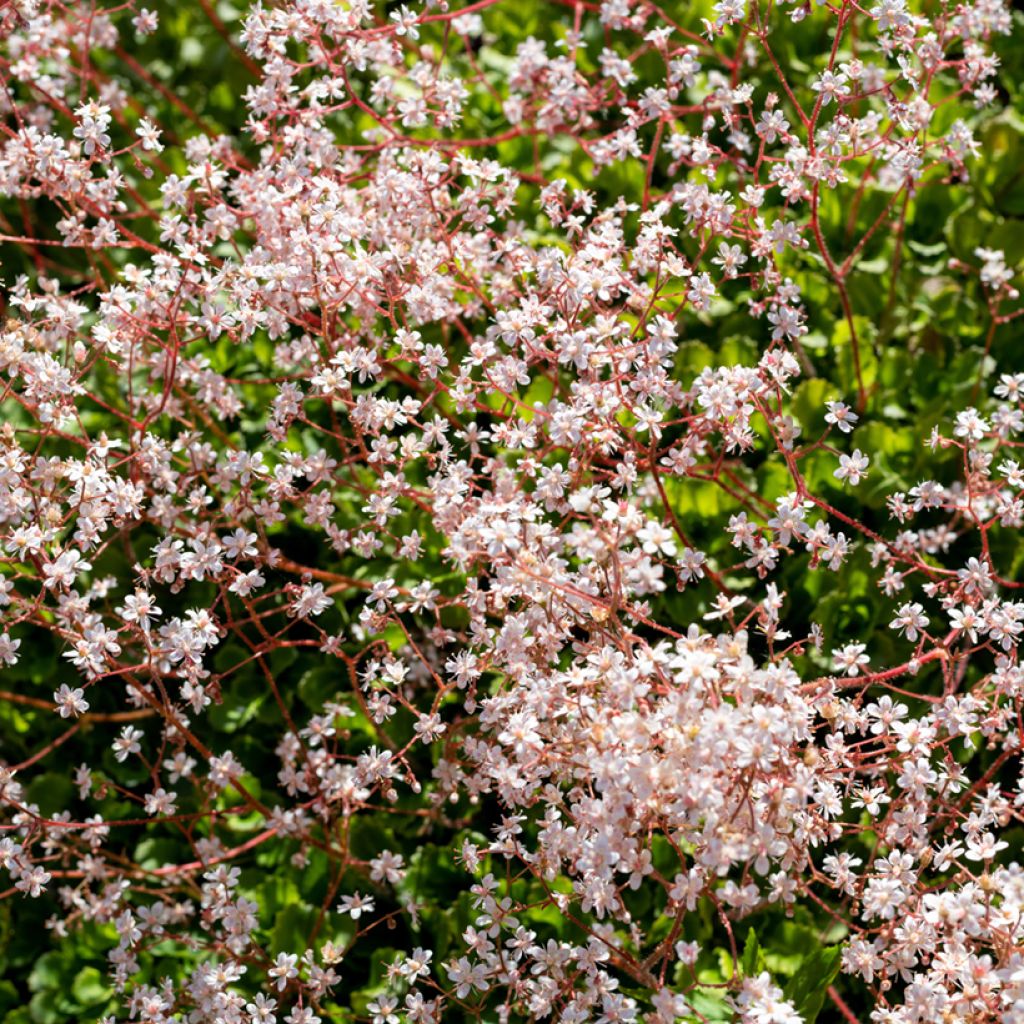

Saxifraga x urbium


Saxifraga x urbium
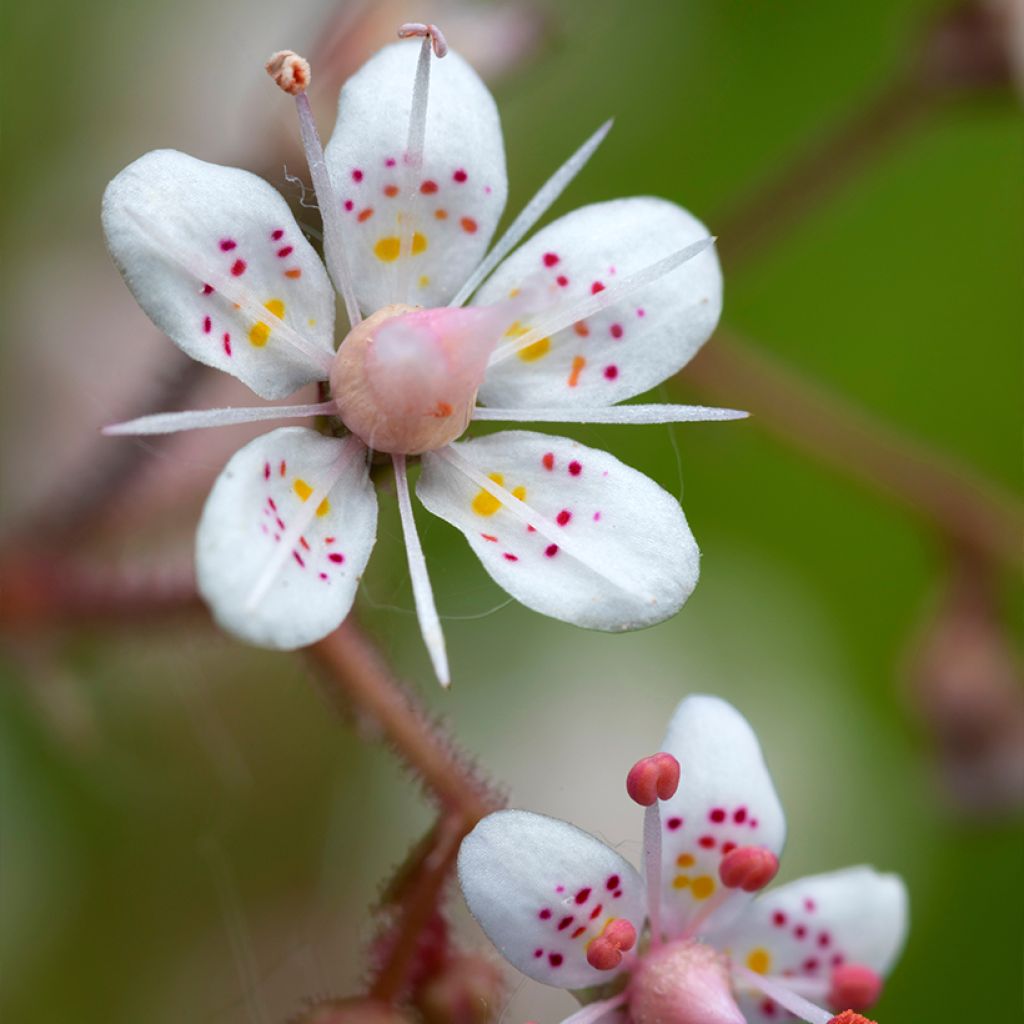

Saxifraga x urbium
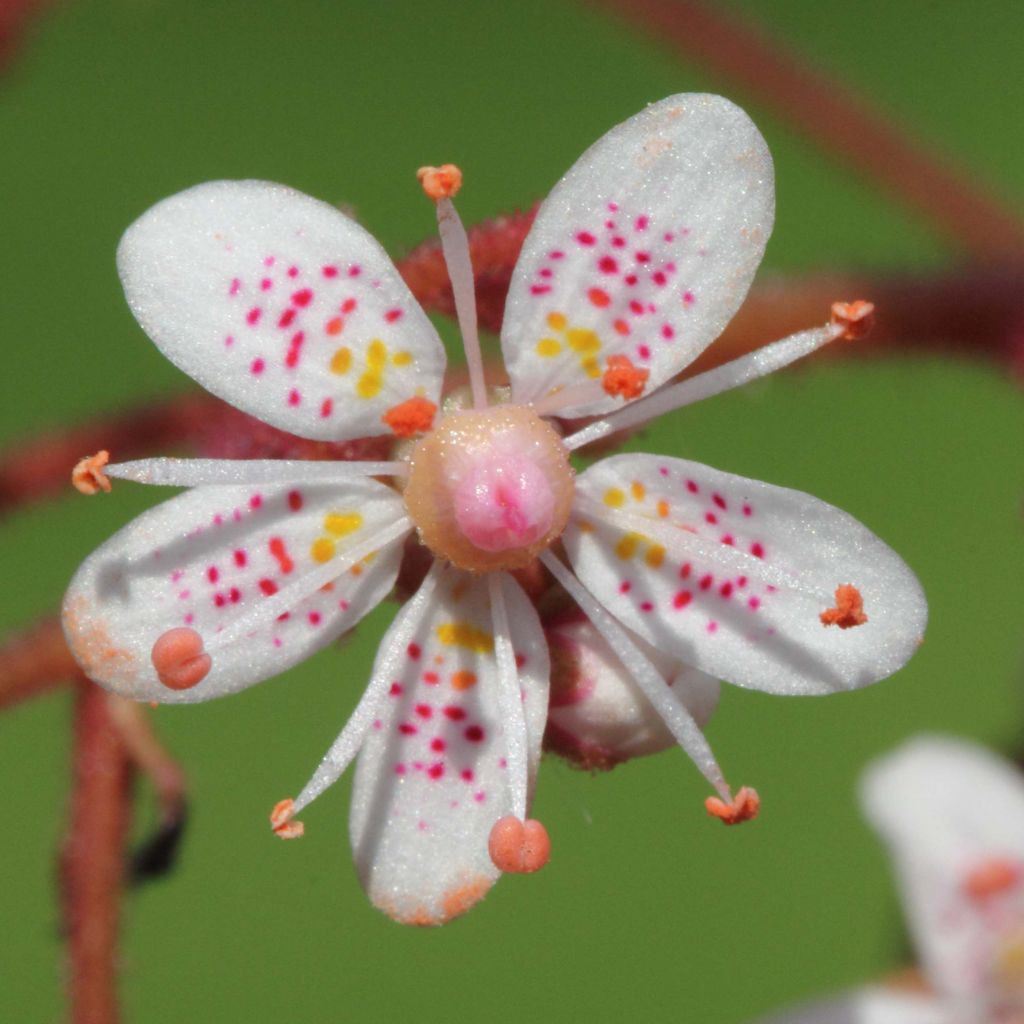

Saxifraga x urbium


Saxifraga x urbium
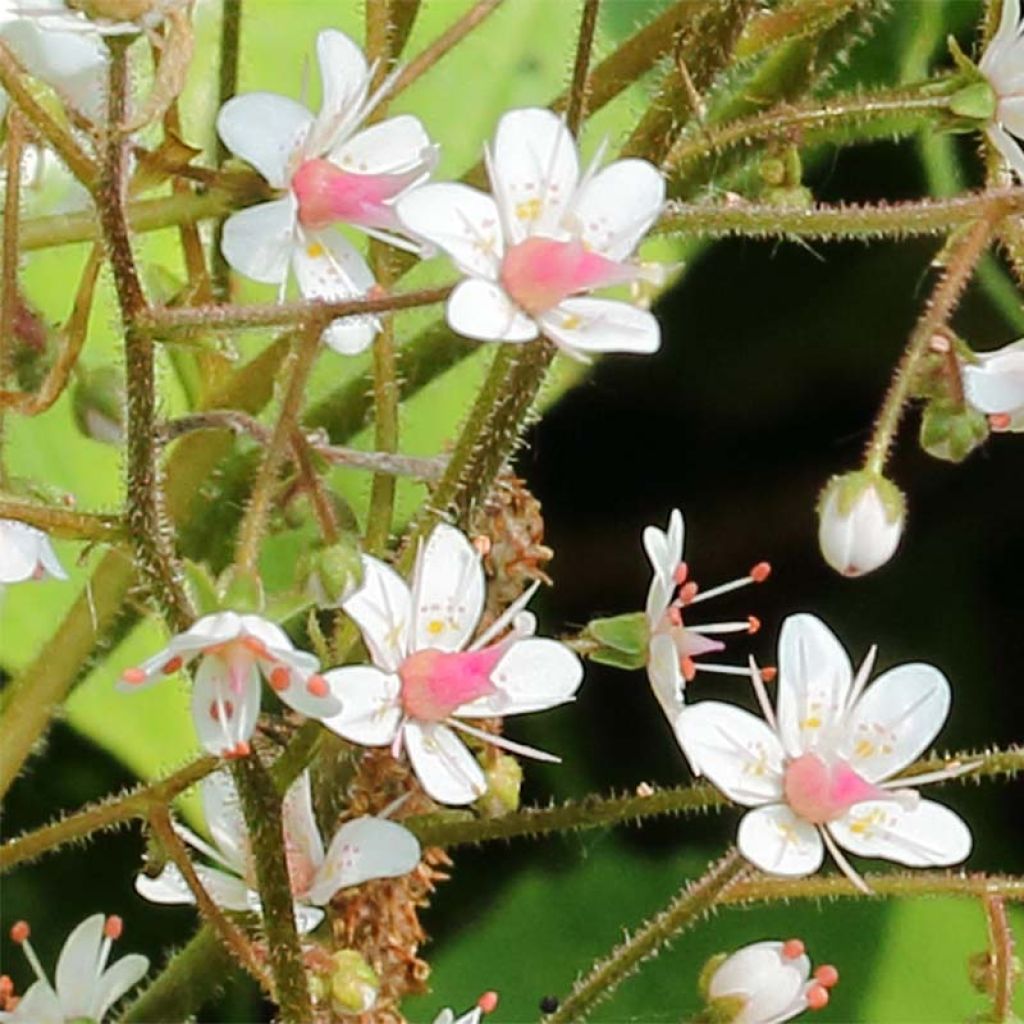

Saxifraga x urbium
Saxifraga x urbium
Saxifraga x urbium
London Pride, None-so-pretty, St Patrick's Cabbage
This item cannot be shipped to the selected country
Delivery charge from €5.90
More information
Schedule delivery date,
and select date in basket
This plant carries a 12 months recovery warranty
More information
We guarantee the quality of our plants for a full growing cycle, and will replace at our expense any plant that fails to recover under normal climatic and planting conditions.
From €5.90 for pickup delivery and €6.90 for home delivery
Express home delivery from €8.90.


Does this plant fit my garden?
Set up your Plantfit profile →
Description
Saxifraga x urbium, often nicknamed 'London Pride', produces branching and cloudy inflorescences in spring, animated by the slightest breath of wind, resembling a shower of white-pink stars powdered with red. Evergreen rosettes, of a succulent appearance, are a beautiful shiny dark green colour, and are capable of keeping weeds at bay. This perennial is a marvel for rockeries and borders, elegantly covering the ground. This saxifrage loves crevices and spaces between slabs, as long as it finds moist soil.
Saxifraga x urbium is a hybrid between Saxifraga spathularis, widespread in Portugal, Ireland, and Spain, and Saxifraga umbrosa, a Pyrenean species. It belongs to the Saxifrage family. The growth of this small perennial is quite slow. Its adult size will not exceed 15 cm (6in) in height, 30 cm (12in) when flowering. It forms rosettes of thick leaves that make up a carpet, slowly spreading over time through stolons anchored in rock crevices and between stones, in the slightest pocket of humus. The foliage is actually composed of long and thick petiolate leaves, spoon-shaped, with very serrated edges, of a pretty dark green and shiny colour. Flowering takes place in May-June, in the form of naked and ramified purple stems, emerging from the rosettes, and bearing small white to pink single flowers, delicately powdered with red.
This London Pride can be used to edge paths and borders, but it can also be used for larger areas. On shaded slopes, for example, where grass remains scarce, it will thrive very well. It can also replace the moss that invades a shaded end of the lawn by digging this plot to plant a carpet of saxifrages. For the same reason, this plant will serve as a groundcover between shrubs and trees. A fantastic problem solver, it adapts without any difficulty to the poorest sandy soil or shady locations. That is why it proves to be very valuable in the most disadvantaged areas of the garden. For example, in the shade, in the north. It will camouflage a portion of soil where stones or construction waste have been buried.
These plants often grow in rock crevices. It was long believed that this plant could have medicinal properties and could eliminate kidney stones. In the family of rock plants, the genus Saxifraga constitutes a particularly large category comprising more than 450 species. Saxifrages are among the plants reaching the highest peaks of the highest mountains. In these inhospitable places, nature has created true survivors.
Report an error about the product description
Saxifraga x urbium in pictures
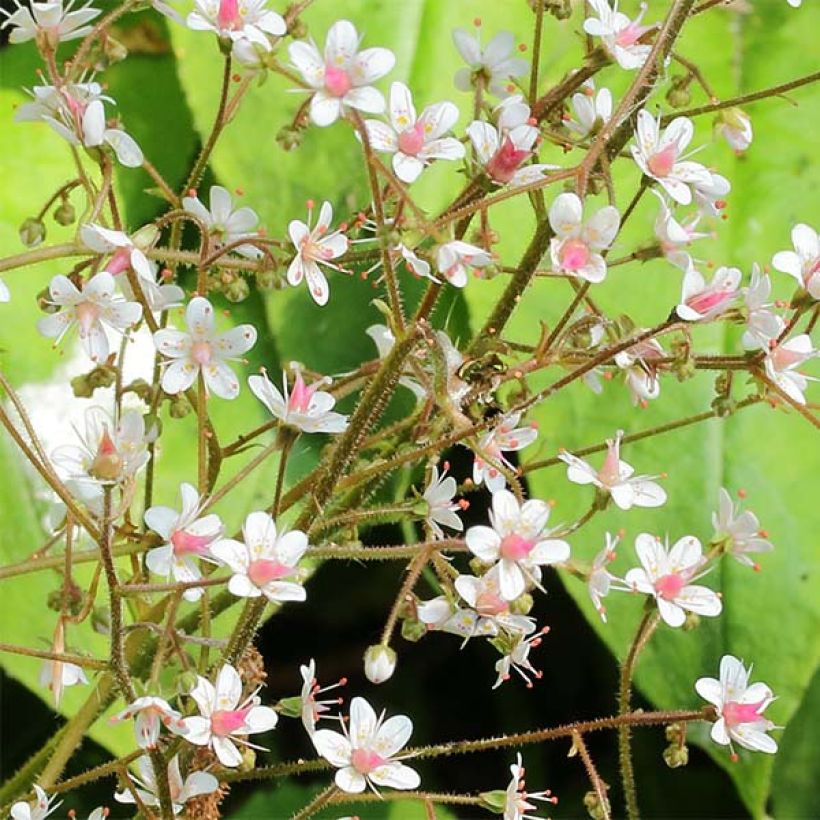





Flowering
Foliage
Plant habit
Botanical data
Saxifraga
x urbium
Saxifragaceae
London Pride, None-so-pretty, St Patrick's Cabbage
Cultivar or hybrid
Other Saxifraga
Planting and care
Plant Saxifraga x urbium in permeable and humus-rich, neutral or slightly chalky, damp to moist and especially well-drained soil. In heavy soil, adding compost or potting soil is beneficial. This plant prefers a shady or semi-shady position and is sensitive to arid and scorching conditions. It requires little maintenance, but you must weed around it when it is young, as the aggressive competition from certain weeds and perennials can harm its establishment. Faded flowers can be removed after flowering for a cleaner look. It is best to plant this small perennial in March.
Planting period
Intended location
Care
-
, onOrder confirmed
Reply from on Promesse de fleurs
Summer flowering perennials
Haven't found what you were looking for?
Hardiness is the lowest winter temperature a plant can endure without suffering serious damage or even dying. However, hardiness is affected by location (a sheltered area, such as a patio), protection (winter cover) and soil type (hardiness is improved by well-drained soil).

Photo Sharing Terms & Conditions
In order to encourage gardeners to interact and share their experiences, Promesse de fleurs offers various media enabling content to be uploaded onto its Site - in particular via the ‘Photo sharing’ module.
The User agrees to refrain from:
- Posting any content that is illegal, prejudicial, insulting, racist, inciteful to hatred, revisionist, contrary to public decency, that infringes on privacy or on the privacy rights of third parties, in particular the publicity rights of persons and goods, intellectual property rights, or the right to privacy.
- Submitting content on behalf of a third party;
- Impersonate the identity of a third party and/or publish any personal information about a third party;
In general, the User undertakes to refrain from any unethical behaviour.
All Content (in particular text, comments, files, images, photos, videos, creative works, etc.), which may be subject to property or intellectual property rights, image or other private rights, shall remain the property of the User, subject to the limited rights granted by the terms of the licence granted by Promesse de fleurs as stated below. Users are at liberty to publish or not to publish such Content on the Site, notably via the ‘Photo Sharing’ facility, and accept that this Content shall be made public and freely accessible, notably on the Internet.
Users further acknowledge, undertake to have ,and guarantee that they hold all necessary rights and permissions to publish such material on the Site, in particular with regard to the legislation in force pertaining to any privacy, property, intellectual property, image, or contractual rights, or rights of any other nature. By publishing such Content on the Site, Users acknowledge accepting full liability as publishers of the Content within the meaning of the law, and grant Promesse de fleurs, free of charge, an inclusive, worldwide licence for the said Content for the entire duration of its publication, including all reproduction, representation, up/downloading, displaying, performing, transmission, and storage rights.
Users also grant permission for their name to be linked to the Content and accept that this link may not always be made available.
By engaging in posting material, Users consent to their Content becoming automatically accessible on the Internet, in particular on other sites and/or blogs and/or web pages of the Promesse de fleurs site, including in particular social pages and the Promesse de fleurs catalogue.
Users may secure the removal of entrusted content free of charge by issuing a simple request via our contact form.
The flowering period indicated on our website applies to countries and regions located in USDA zone 8 (France, the United Kingdom, Ireland, the Netherlands, etc.)
It will vary according to where you live:
- In zones 9 to 10 (Italy, Spain, Greece, etc.), flowering will occur about 2 to 4 weeks earlier.
- In zones 6 to 7 (Germany, Poland, Slovenia, and lower mountainous regions), flowering will be delayed by 2 to 3 weeks.
- In zone 5 (Central Europe, Scandinavia), blooming will be delayed by 3 to 5 weeks.
In temperate climates, pruning of spring-flowering shrubs (forsythia, spireas, etc.) should be done just after flowering.
Pruning of summer-flowering shrubs (Indian Lilac, Perovskia, etc.) can be done in winter or spring.
In cold regions as well as with frost-sensitive plants, avoid pruning too early when severe frosts may still occur.
The planting period indicated on our website applies to countries and regions located in USDA zone 8 (France, United Kingdom, Ireland, Netherlands).
It will vary according to where you live:
- In Mediterranean zones (Marseille, Madrid, Milan, etc.), autumn and winter are the best planting periods.
- In continental zones (Strasbourg, Munich, Vienna, etc.), delay planting by 2 to 3 weeks in spring and bring it forward by 2 to 4 weeks in autumn.
- In mountainous regions (the Alps, Pyrenees, Carpathians, etc.), it is best to plant in late spring (May-June) or late summer (August-September).
The harvesting period indicated on our website applies to countries and regions in USDA zone 8 (France, England, Ireland, the Netherlands).
In colder areas (Scandinavia, Poland, Austria...) fruit and vegetable harvests are likely to be delayed by 3-4 weeks.
In warmer areas (Italy, Spain, Greece, etc.), harvesting will probably take place earlier, depending on weather conditions.
The sowing periods indicated on our website apply to countries and regions within USDA Zone 8 (France, UK, Ireland, Netherlands).
In colder areas (Scandinavia, Poland, Austria...), delay any outdoor sowing by 3-4 weeks, or sow under glass.
In warmer climes (Italy, Spain, Greece, etc.), bring outdoor sowing forward by a few weeks.
























































